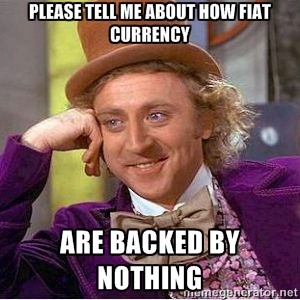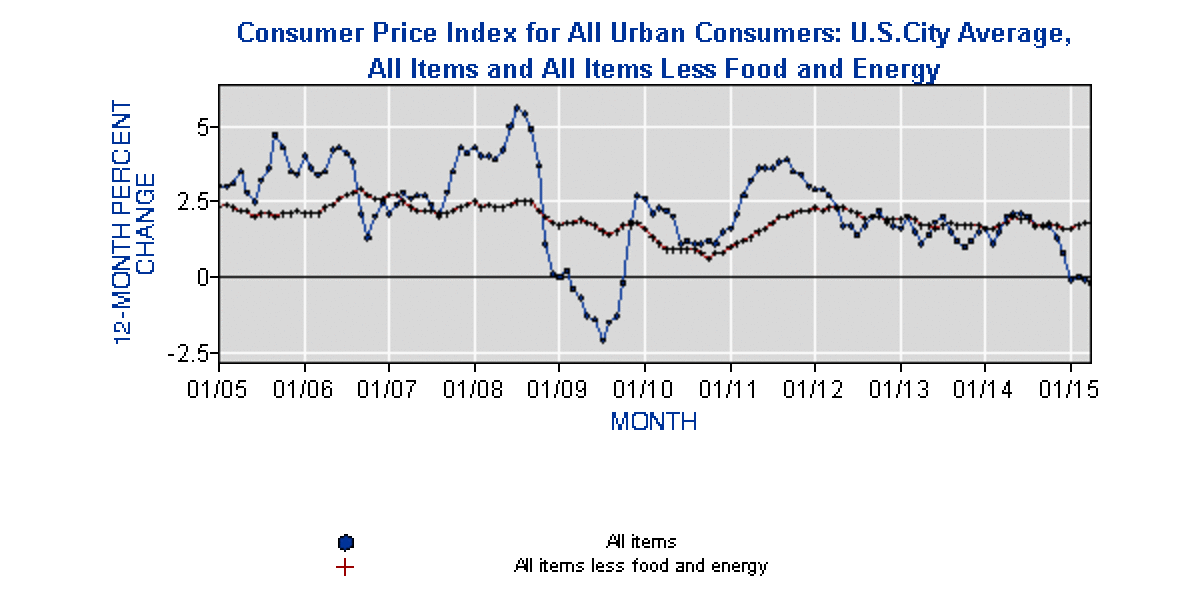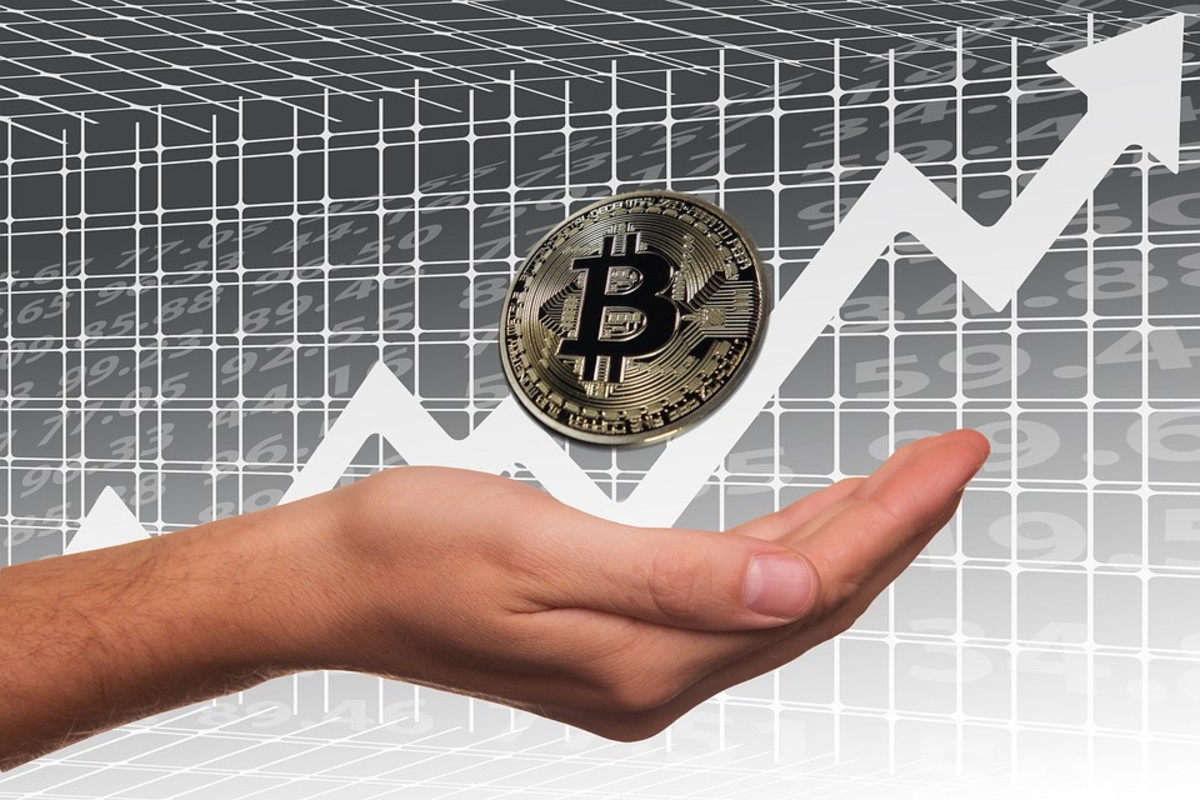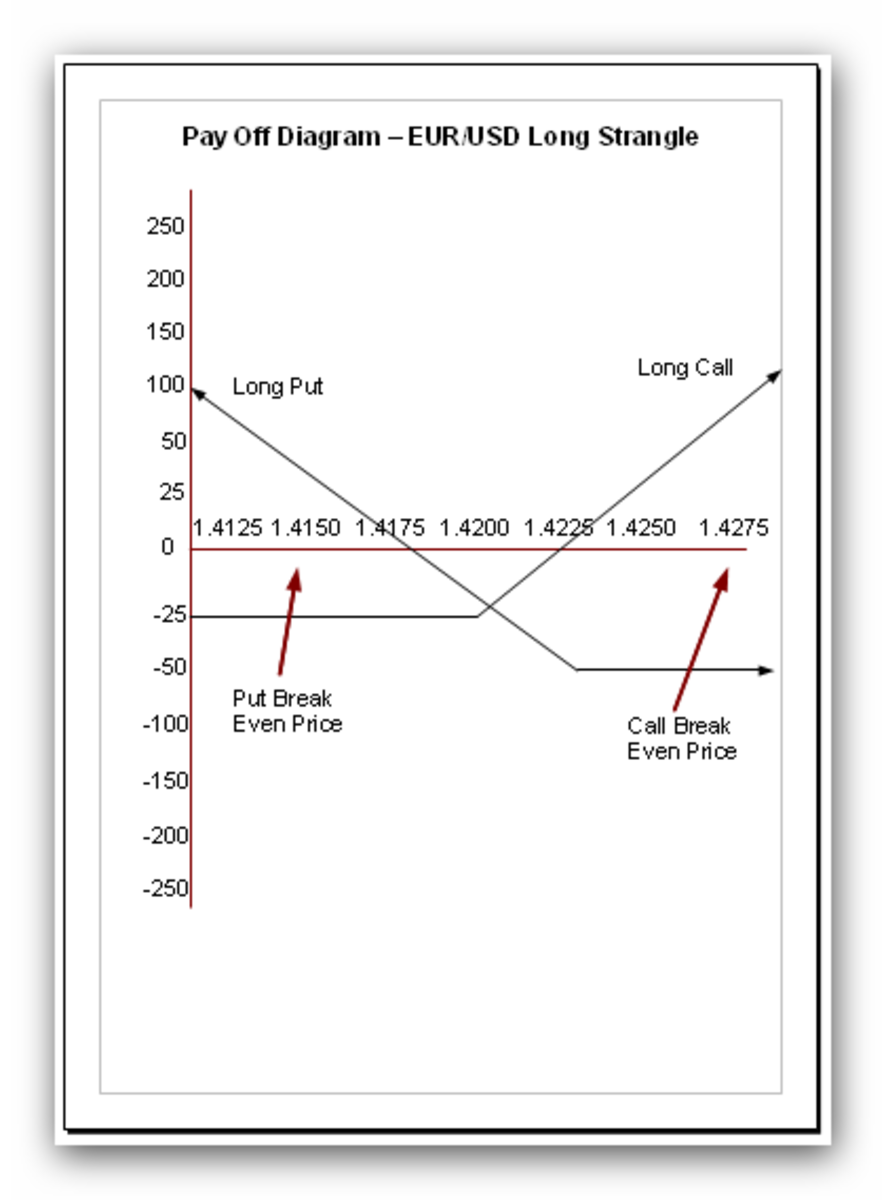Fiat Currency | What Is A Fiat Currency And How To Protect Yourself Against A Fiat Money

Fiat Currency Explained | Currency is Paper?
That's it, that's all it is... just paper. Currency is whatever we agree is money. I could pick up a rock and say that it's worth a burger and fries but unless you agree I won't be able to use the rock to buy lunch. Our intermediaries (the government) tell us that their money is backed by their reserve system or treasury and that all money has value. We all collectively agree that this paper has value so we use it as a mean of exchange.
But what is Currency really and why can it be so valuable?
The good old days
The Ancient Egyptians used a form of paper Currency .People would store their grain in a collective storage bin. Upon arriving a tenant would weigh the grain and provide a ticket accordingly. People quickly realized the value of having these tickets so they used them as a means of trade and purchasing daily goods.
In North America and Europe Gold and Silver were considered valuable. But carrying around the precious metals were dangerous. So they kept the bullion locked up in bank vaults in exchange for tickets that valued their deposits. They too realized that they could use the note rather than the actual gold to buy things. People realized that a note meant hard currency.
Fiat Currency Definition
Banks soon realized that people valued notes and not the actual gold so they began printing extra notes to lend out to people buying houses and farms. That way if the loan defaulted they could just reposes the property and resell before anyone would notice that there were more notes than gold deposits. With money being made in the form of interest banks could no longer hid the fact that they had more in assets than they did in the vault so they helped invent the Fiat Money System.Governments came on board the Fiat money train because they realized that they could loan way more money than they possibly could before to finance large projects.With people distracted, the government made their move and established the Federal Reserve Bank to take care of the money supply.
Federal Reserve Bank
The Federal Reserve Bank is not a government institution. What happens is the Government says that they need more money to help the car companies. They go to the Fed and ask for $. The Fed makes the U.S. sign an iou and then prints the money. The Fed then collects interest on the loan and that just gets piled onto the national debt. The money now is sent to the auto manufacturers and everyone is working and happy. But they soon realize that they have to pay back this loan so at tax time the income tax is all sent to the Fed to pay the minimum interest payments on the national debt they've incurred.
Do You Know How To Protect Yourself Against A Fiat Currency?
Bad Money-Bad Money Drives Out Goods
Gresham's Law, Clipped Coins, & American Finance
An obscure economic theorem called "Gresham's Law" states that:
Bad money drives out good.
What does that mean, and how does it apply to us today?
Gresham's Law is named for Sir Thomas Gresham (1519-1579), an English financier who lived and wrote during the Tudor Dynasty. During Greshams' era, coins were minted from the same metals that backed their value. A 'good' coin In Tudor England contained the exact amount of precious metal that made it valuable. In other words, (to invent an example here), a $10 gold coin was actually made from exactly $10 worth of gold. A $10 coin made of $10 worth of gold was called 'good money'. In an effort to enrich themselves, certain unscrupulous types regularly messed with the Tudor coinage. Sometimes they 'clipped' the coins (meaning they shaved off small amounts of gold and stashed it). Sometimes they debased the coins by mixing in cheaper metals, once again allowing them to pocket some gold.
This clipped and debased coinage was called 'bad money'.
Gresham observed that when both bad money and good money are in circulation at the same time, the bad money will always drive the good money out of circulation because people will pocket and hold whatever 'good' money they find and circulate only the bad money. To use another off-the-wall example, say you are going to the Tudor 7/11 for a Tudor Slurpee and you know you have both a 'bad' coin and a 'good' coin in your pocket. You are going to pay for that Slurpee with the 'bad' coin (if you have any sense at all), and take the 'good' coin home and squirrel it away.Before long, all the money in circulation will be 'bad', and all the 'good' money will be locked up and out of circulation. Squirreled away. Frozen. We no longer circulate gold coins (partly for this very reason, and others as well), but today, the United States has managed to kick off a worldwide Gresham's Law scenario anyway. The 'good money' is currently locked up in the hands of an elite few and is not circulating. The bad money', the money that is circulating, is debased currency backed by nothing of real value.

This Video Is Very Educative
How Can This Happen In A World Where Currency Is Symbolic?
Modern Money
Modern money is no longer backed by gold or precious metal, but rather by the the economic health and global reputation of the nation issuing it. Money backed by economic activity has a number of advantages over money backed by gold. The biggest advantage of this kind of money (called fiat money) is that more of it can be printed and circulated, thus creating more capital and with it more opportunity for business growth and expansion. By contrast, when money is backed by gold, the amount of money in circulation is limited to the amount of gold in reserve. Less gold, less money. As long as businesses use fiat money (the kind not backed by gold) as capital to expand and add value to society in the form of real goods or services, the value of the fiat money stays stable. It remains 'good money' (even though it isn't backed by gold) because the economic health of the country printing it is maintained. The value of the money is in the value of the people and their activities: industry, services, manufacturing, and so forth.
Real goods and services = fiat money that has real value.
Fiat currency collapse or goes 'bad' when more and more fiat money is created but no real value is added to the society printing it. The simple act of printing more money is not what makes the fiat money go bad. What makes fiat money go bad is printing lots more of it but not immediately using that increased money supply to create more goods, more services, more jobs, more buildings, more exploration, etc.: In other words, more real things of real value.
That's what's happening in the world today, especially in the U.S.
How did it happen?
The Dark Side of Modern Money
Clipping coins isn't an effective way to game the system when a society uses fiat money, because the value of the money is symbolic. In order to cheat with fiat money, what you have to do is create profit without adding value. While you extract profit to no good end, you must at the same time hoard all the real property, goods, and valuable services for yourself and make no improvements whatsoever, risk no expansion, and employ no more workers, (in fact, get rid of them as soon as you can because they eat into your profit). Can you think of an enterprise that is currently in the business of doing this? In case you haven't guessed yet, that business is banking. Banks make money off of debt, and so it is in the interest of every bank to create more debt so they can at the same time create more money (and keep it, to create more debt).
Banks create debt (and make money) through a process called fractional reserve lending. In simple terms, what this means is that a bank only has to keep a fraction of the amount of money on its books in reserve, as liquid money that you could go into the bank and actually withdraw. So, say you put $10 in a bank. The bank keeps $1 in reserve against your $10 and loans out the other $9 and charges interest on the loan, thus making a little money.
Now here's the tricky part:
The person who borrowed that money can (and usually does) walk across the street to another bank and deposit that $9. That second bank will keep .90 cents and loan out $8.10. A total of $17.10 has just been created out of thin air by the two banks (the first $9 loan plus the second $8.10 loan that is probably already on its way to sit in Bank #3 until it is spent). As crazy-making as this sounds, it works out so long as the money lent out is spent fairly quickly on real goods or services or anything else that adds value to the economy underlying the whole transaction. Usually that is exactly what happens. It's also important (if a fiat money system is going to work) for the banks to make responsible decisions about how money is lent and to whom, how much is lent out and to whom, and for limits to be placed on how small the fraction can be that the banks must keep in reserve. If the banks keep a fraction of a fraction of a penny of each dollar deposited, that's asking for trouble. If the banks take the money to be loaned out and use it go gamble on the stock market, that's another potential huge problem. If the banks can gamble all the money loaned out on the stock market and do it many times over and over (using the same money) by inventing 'products' out of debt that are then sold and resold on the stock market (leverage, securitization) that can go batshit-bad really, really fast. Last but not least, since the government controls and prints the money supply in a fiat money system, the government also has to observe some basic economic principles or the whole system goes out of whack.
If the government prints money and creates debt but does not turn around and add value in the form of goods, service, or improvements, the value of the money drops and the society experiences inflation: too much money chasing too few goods. Governments can do this by waging pointless wars (lots of money printed, no value added), propping up failing businesses (lots of money printed no value added), failing to regulate the banks (gazillions of dollars created out of thin air, no value added), or collapsing the boundaries between retail banking (your local bank that keeps your checking account) and investment banking (Bear Stearns, Lehman Brothers).
So, the dark side of fiat money is debt.
Debt can be used as capital to make the economy stronger (either by government or individuals), or it can be squandered or used to fuel enterprises that suck out profit without adding anything real to keep the money stable. When both kinds of debt are being circulated--bad debt that fuels imaginary money and good debt that provides capital for actual business expansion, goods, services, and jobs--then we have a Gresham's Law scenario with fiat money.The bad money has driven out the good money. My suggestion to you will be to diversify your portofolio as much as you can because the U.S will stop being the world's base currency very soon. (Read one of our article on how the U.S. dollar will cease being the world's base currency in few years to come.)
Now What?
In 1950, manufacturing comprised 29.3% of the Gross Domestic Product of the United States and financial services comprised 10.9%. By the beginning of 2005, financial services had doubled to comprise a whopping 20.4% of GDP, while manufacturing had plummeted to only 12%. These figures are taken from a report compiled in November of 2004 by the Bureau of Economic analysis entitled "Gross Domestic Product by Industry." Today, in mid-2009 with the American auto industry in free fall and unemployment headed into the double digits, these figures are almost certainly much, much more dramatic and unbalanced. While we were shipping all our industry and good jobs overseas, the U.S. financial services sector was aggressively marketing consumer debt so Americans could keep buying things that other nations were now making. (The infamous 'consumer economy'.)
In 1974, outstanding household debt in the U.S. totaled $680 billion. That's a lot of money, but nothing compared to the thirteen trillion dollars it had morphed into by 2006.In 1969 domestic debt was 12% of GDP in the U.S. By 2006 domestic debt was 107% of GDP. So right now, we have lots and lots or fiat money backed by not much in the way of real goods, real services, real economic growth. We have bad money. Now what?
Hey, do you really think I have an answer? Are you serious? I mean, come on! If I did, would I be writing for Hub Pages? Would I be sitting in my living room in Michigan with Ghost Hunter's on the TV in the background wondering if my Adsense revenue will make up for the jobs I'm not scaring up this week over at Elance?Get real! But I can tell you what the U.S. is not doing about our bad money right now: We're not regulating the financial industry.
We're not finding a way to revitalize manufacturing, to keep jobs in the U.S. or to add real value by supporting businesses that produce real products or real services. We're not monitoring the Federal Reserve (which monitors the money supply), or keeping investment banks out of your back pocket. In fact, we're letting investment banks regulate the investment banks.Yeah, that's a good idea.
In short, the U.S. government is currently not only allowing the bloated, top heavy, out-of-control financial sector to suck profit out of the cadaverous U.S. economy without adding value back in, it's helping the financial sector suck profit out without adding value back in. I'm no financial genius, but I'm thinking we might start a true recovery by taking that bad money out of circulation. Stand up to the banks. Make them stop hoarding the good money. Make them accountable. Start adding real value, instead of just sucking profit. That's my personal suggestion.I don't think for a minute this is going to happen without bloodshed. What I mean is, I expect there will be a further collapse of the U.S. economy, or even a further collapse of the world economy. It will get uglier and uglier. If we press for real reform now, instead of later, maybe we can prevent some of that ugliness. Economics is not rocket science, financiers just try to make it sound like rocket science to keep their hands on the wheel. We keep hearing about the 'first green shoots' of recovery starting to show. There are no green shoots. You know this, don't you? The media and the government keep going on as if any day now (Bernanke claims by the fourth quarter of this year) people will start spending again and the consumer economy will be back. Nevertheless, I just want to know one thing:
Start spending what?









